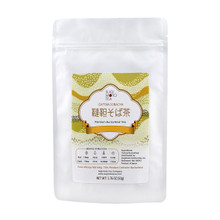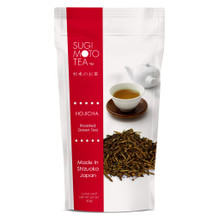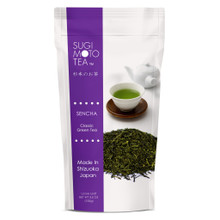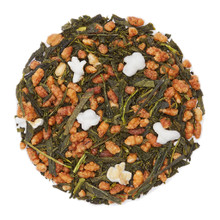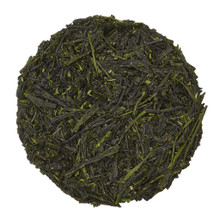Green Tea vs Coffee | Everything You Need to Know
The green tea vs coffee debate isn’t a new topic, but it’s often compared only for caffeine content or health benefits. Here, we compare green tea and coffee from different angles to help you understand more about each beverage.
Guide Contents:
Green Tea vs Coffee | An In-Depth Comparison
1. Caffeine Content
The gist: Coffee generally has more caffeine than green tea, but certain factors can affect this, and in some cases, it can be the other way around. Different factors, both within and outside the control of the drinker (e.g. brewing method and time vs tea variety/coffee species) affect the caffeine levels in the final brew.
The effects of caffeine can be felt faster in coffee since it has a higher caffeine content, but green tea has the added benefit of having L-theanine, which has a calming effect.
Which Has More Caffeine — Tea or Coffee?
Coffee generally has more caffeine than green tea. Based on the FDA’s estimate, an 8 oz cup of coffee typically contains 80 to 100 mg of caffeine. In contrast, an 8 oz cup of green tea typically has 30 to 50 mg of caffeine.
Naturally, there are deviations to this since there are factors that can affect the caffeine content in both tea and coffee. Some coffees have more caffeine than others in the same way that some teas also have a higher caffeine content than others.
Factors That Affect the Caffeine Content in Green Tea
- Tea Variety — The caffeine content in tea varies depending on the variety.
- Harvest Time of Leaves — The harvest season of tea leaves can also affect caffeine content, with earlier harvests of the same plants having a higher caffeine content.
- Temperature — The higher the temperature, the more caffeine is extracted into the brew.
- Brewing Time — Longer steeping/brewing will yield more caffeine. However, brewing time is related to temperature since hotter water will also extract caffeine faster into the brew. This is why cold-brewed tea, while steeped longer, will still have less caffeine than hot-brewed tea.
- Brewing Method — Also related to temperature, cold-brewing extracts less caffeine into green tea than hot brewing. Iced tea, however, is generally brewed hot and then iced to cool down, so it has as much caffeine as a normal hot brew.
*Based on analyses by Eurofins Scientific Inc.
Factors That Affect the Caffeine Content in Coffee
- Coffee Species and Grind Size — Arabica has a lower caffeine content than Robusta. The grind size of the coffee also has an effect on caffeine content, with finer grinds releasing more caffeine.
- Brewing Method — Between the brewing methods, such as drip coffee, percolator, and French press, and the espresso method, brewed coffee has been found to have more caffeine perserving. This is based on the typical serving sizes for espresso (1 oz/shot) and brewed coffee (8 oz/cup).
- Amount of coffee used — More coffee that goes into the brew also means a higher caffeine content.
- Brewing Time — Another factor that affects how much caffeine is in coffee is the brewing time — the longer the brewing time is, the more caffeine is extracted.
- Temperature —More caffeine is extracted into coffee brewed using higher temperatures. This is why cold-brewed coffee has a lower caffeine content than hot-brewed coffee.
Decaf Green Tea vs Decaf Coffee
Most people probably know about decaf coffee but decaf green tea is a little harder to find. However, much like decaffeinated coffee, decaffeinated green tea also isn’t completely caffeine-free, although its caffeine content is significantly lower. Typically, the remaining caffeine content is 5%~15% of the original beans or leaves.
2. Adaptability
The gist: Both green tea and coffee can be adapted in various drink recipes since their flavors are versatile. Whether hot, cold, spiked with alcohol, or mixed with milk, both coffee and tea have a flavor that can be used for different drink recipes.
Tea-Based and Coffee-Based Hot Drinks
- The conventional way — Green tea or coffee prepared with hot water and served with milk or sweetener. From a western perspective, it may seem like coffee has more variety in terms of brewing methods (i.e. use of espresso machine, drip, French press, etc.). However, there is just as much diversity in tea brewing methods, such as small gaiwan brewing, bowl brewing, brewing in the cup, cold-brewing in a pitcher, and whisking matcha.
- Cafe-style drinks — Both coffee and tea are featured heavily in various cafe-style drinks. Some coffee-based cafe drinks include frappes, lattes, cappuccinos, espresso, and affogato. Many of these drinks are also found with a tea base instead (i.e. matcha latte, matcha affogato). Likewise, there are other tea-based cafe-style drinks that were first popularized in Asia, such as milk/boba tea.
Tea-Based and Coffee-Based Cold Drinks
In terms of cold drinks, green tea and coffee are similar, whether it’s with ice or blended into a frappuccino. Also related to this is cold-brewing, which is a brewing method that can be used for either drink and can be used to make iced coffee/green tea.
Alcoholic Drinks that Incorporate Green Tea and Coffee
Like cold drinks, spiked coffee and green tea-based beverages are also becoming popular, whether as cocktails (i.e. Espresso Martini and Green Tea Martini), shots (i.e. B52 and Green Tea Shot), or infused liquor (both coffee and green teas like Sencha Fukamushi or matcha can be infused in vodka or gin). Popular brands include Bailey’s Irish Cream (Irish whiskey + coffee + cream) and Kahlua (Arabica coffee liqueur) for coffee and Roku (which combines gin with sencha and gyokuro) and Suntory’s Kanade Matcha (matcha liqueur).
3. Preparation Methods
The gist: Both green tea and coffee have a variety of preparation methods unique to each.
Brewing loose-leaf teas and tea bags are the most recognizable ways of preparing green tea worldwide, but there are other methods like small gaiwan brewing, bowl brewing, and matcha whisking that originated in eastern cultures.
On the other hand, there are a variety of ways to prepare coffee, such as those dictated by the brewing accessories involved in each method. These include the use of an espresso machine, Aeropress, and Moka Pot, among others. Like green tea brewing methods, you can also find ways of brewing coffee tied to a certain culture or location. One example is “Turkish sand coffee,” which gets its name from the use of hot sand as its heat source.
One method that’s similar to both beverages is cold-brewing. The process and tools for cold-brewing coffee and green tea are essentially the same, with slight differences (e.g. steeping time).
4. Culture
The gist: Both coffee and green tea have thriving, dynamic cultures that continue to evolve as society changes.
- Green tea, specifically Japanese green tea, is often associated with culture, tradition, and health and wellness.
- On the other hand, coffee is often tied to its social aspect, with recent changes in the culture happening in response to the changes in values and buying behavior of the consumers.
Modern Green Tea Culture
These days, green tea, particularly Japanese green tea, can primarily be viewed from two aspects:
- Growing Popularity of Green Tea, particularly Matcha
- In the marketplace — Arguably the most popular Japanese green tea in Western culture, you’ll find matcha in various food and beverage recipes and even non-food items, such as skin care products. Matcha and green tea lattes are also becoming increasingly common in coffee shops as a non-coffee alternative, and are becoming as common as chai.
- On social media — An Instagram search of #matcha will yield more than 5 million posts, which is just around 2 million shy of the more general #greentea. And, if you look closer at #greentea, you’ll find that matcha-related posts still account for a big chunk of the posts in this hashtag.
- Modernization of green tea consumption — While the ritualistic roots of consuming green tea, particularly the Japanese tea ceremony still exists, this is just a minority these days. Green tea consumption is no longer confined to ceremony and it’s way more common for people to enjoy it casually. Japanese tea producers are also trying to adapt to younger consumers who have different buying habits.
- Health — Green tea is often associated with health and wellness since popular culture often highlights its health benefits.
Modern Coffee Culture
Modern coffee culture can be viewed from four aspects:
- Coffee as a productivity booster — Coffee is seen as the quintessential productivity drink, judging by the rise of coffee chains (and “cofficing,” or working at a coffee shop becoming popular) and coffee machines being a typical fixture in workplaces.
- Personalization — Coffee is becoming more personalized. Over the years, the market has changed from the limited instant coffee options in grocery stores to the numerous beverage options offered by coffee shops and specialty coffee products matched to the buyer’s tastes and preferences.
- Drinking coffee as a social event — Coffee shops are no longer just seen as a place to grab a cup of joe since they’re a popular hangout place as well.
- Third-wave/specialty coffee — With values like sustainability and mindful consumption becoming increasingly more important for consumers, particularly with the younger generations, the third-wave movement has been slowly gaining traction in coffee culture in recent years. At its core, the third-wave movement champions values like ethical farming and business practices, traceability, and more mindful consumption.
Both green tea and coffee offer various upsides, including increasing energy levels and providing health benefits. Hopefully, this article has given you a better idea of the unique benefits of both beverages to help you decide which is better for you.
Are you on Team Green Tea? Check out our wide range of high-quality Japanese green teas!
Likewise, if you’re unsure of which green tea would be great for you, feel free to contact us to learn more. You can also check out our samplers, which can give you a taster of different Japanese green teas for one price.
Disclaimer: Please note that this post is intended to provide information and shouldn’t be taken as medical advice. Additionally, any information in this post and any linked posts shouldn’t be used to replace professional medical advice or treatment.















